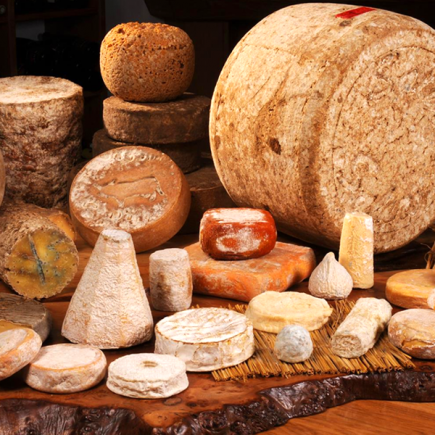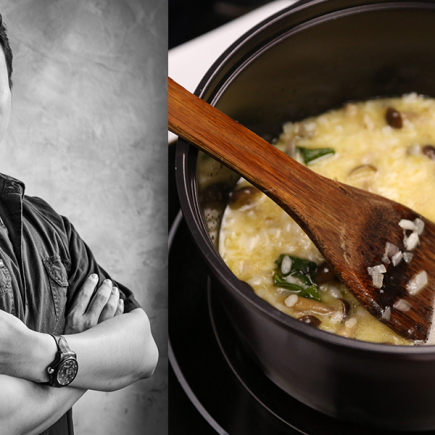
Restaurants have never been more involved in saving the world. Well, for some, serving heavenly delicacies just about does it. But insiders of the culinary world think there is more to it than that. As they discover an increasing societal influence, forward-thinking chefs are not only dedicated to their craft, but also become advocates of sustainability through how and what they cook. Let’s take a look at how some industry leaders do it.
1. The farm-to-table approach
A farm-to-table approach, also commonly known as farm-to-fork, is more than just an artisanal craze. The idea is all for establishing a direct relationship between farms and restaurants. Since the supply chain of farm-to-table becomes more straightforward than the traditional sourcing approach, foods usually arrive still at the peak of their freshness and full of flavours. The concept benefits both parties by recognising sustainable farmers’ hard work and providing guaranteed business, while the restaurants can source wholesome produce.
Having endured serious droughts, Californians are ever so mindful of climate change. To many of them, food quality and service no longer the only criteria when they choose where to eat out. At the local Liholiho Yacht Club, chef and owner Ravi Kapur only works with suppliers who share his passion for sustainability and well-being. Whether it’s the lamb ribs with dates and watermelon radish, marinated squid and crispy tripe, or the lettuce cups of fried oyster and beef carpaccio, he stays true to a locavore mentality while conjuring magical flavours of his Hawaiian, Indian, and Chinese heritage. The resulting food is hearty and irresistible.
2. The forgotten offals
British chef Fergus Henderson is named the father of nose-to-tail cooking for his efforts in popularising the use of the whole animal. The founder of the famed St. John Restaurant pioneered this modern culinary movement. He created the now classic dishes such as roast bone marrow and deviled kidney, which are sought after even by the most accomplished chefs. He is a man in love with meat, and a man who respects animals. To him, using every part of the animal is being polite. It is also an obvious thing to do for offals’ unique texture and potentials of transforming into a great dish.
In fact, the valuable nutrients packed in kidneys, livers and hearts are also why we should include them in the menu. Liver for one, regardless of which animal it came from, is loaded with vitamin A, vitamin C, iron, zinc and B vitamins. From bone marrow to organ meat, there are much more creative and sustainable ways to go about it.
3. Ending food waste
Every year, over 30% of all the food produced is either lost or wasted, that’s around 1.3 billion tonnes of food! It costs the global economy around $940 billion annually. Chefs around the globe have addressed the issue and thrown in new ideas to set an example. Some have been contributing to minimising food waste whilst relieving child hunger in their local community. Suzy DeYoung, who based in Cincinnati, is widely known for her non-profit dedicated to saving good food from ending up in landfills and providing food for the underprivileged. DeYoung’s organisation, La Soupe, not only delivers food to schools and churches regularly, but also hosts cooking classes for children.
Similar projects have also begun to rocket in the past couple of years. Robert Egger, the mastermind behind DC Central Kitchen salvage food that is perfectly ripe and edible but considered too small, visually-distressed, or a little too mushy in the major markets. The kitchen is where highly skilled chefs work their magic to bring unattractive-looking fruits and vegetables back to life and serve them in a presentable way, instead of dumping old lettuce heads and patchy carrots in the landfills.
4. Sourcing sustainable meat

As consumers are more conscious of how common agricultural practices can destroy the environment and threaten public health, sustainably-raised meat is increasingly in demand. Created by the non-profit Holistic Management International (HMI) in 1984, the Holistic Management model is adopted by a growing community of farms that focuses on the awareness on climate change, improving wildlife habitat, growing more nutritious food, farm’s role in the food ecosystem, restoring the environment, strengthening local economies, and feeding the soil.
On the other hand, industrial farms with an enclosed and crowded condition and relying on low-cost feeds are no longer welcomed in the food world. Ethical ranches give their herd optimal conditions to be the healthiest animal they can be. More cattle are grass-fed or pasture-raised in a humane manner, where their diets are specifically formulated for their needs and not supplemented with any by-products, antibiotics or synthetic hormones to promote growth. Chefs are now more committed to working with ranchers who share such sustainable vision. In return, not only are they able to enjoy a supply of fresh, wholesome, flavourful meat for their culinary creations, but also traceability of their meat through all stages of production, procurement and delivery.
5. Beyond geography
Whilst many pride themselves on purchasing local produce, Thomas Keller, the man behind the legendary French Laundry, has another approach to sourcing his ingredients. He thinks about quality, not geography. By establishing long-term relationships with suppliers, gardeners and farmers from around the world, he is able to set up a sustaining network of his own which help provide jobs and contributions to his suppliers’ local communities, regardless of geographic area. As long as the restaurant and farm are connected with a seamless supply chain, which ensures the ingredients are delivered at their freshest, restaurants no longer have to depend on the proximity of their food source for quality ingredients and to safeguard the environment.
Sustainability in the food industry is more than just a passing fad. Consumers are now demanding efficiencies in how food is sourced, created and delivered. At the same time, restaurant chefs are now taking extra steps to initiate change in the culinary world, and the menu is just a starting point.

